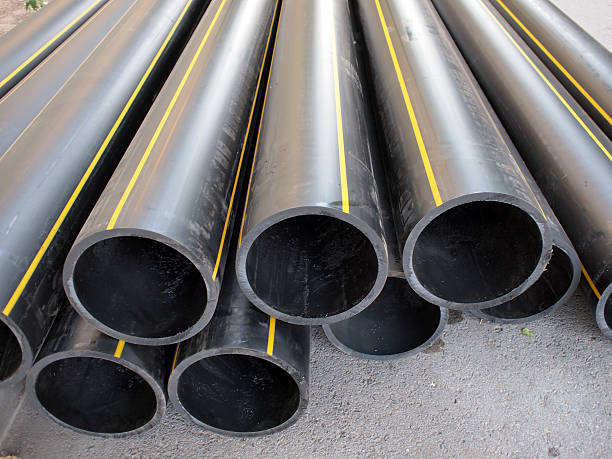Fortress Investment Group has acquired Infra Pipe Solutions, a leading Canadian manufacturer of HDPE pipes and engineered thermoplastic products. This strategic move reflects Fortress’s confidence in infrastructure investment and its commitment to sustainable, long-life piping solutions. With this acquisition, Fortress strengthens its position in the industrial and utility sectors by backing a business that supports essential services like water, sewage, mining, and energy.
Infra Pipe Solutions, known for its innovation in high-density polyethylene piping systems, plays a key role in Canada’s infrastructure landscape. Its products serve vital applications across civil, municipal, and industrial sectors. By bringing Infra Pipe under its ownership, Fortress adds a highly scalable and future-ready manufacturer to its portfolio.

Why Fortress Targeted the HDPE Market
Fortress identified HDPE pipes as a growth opportunity due to increasing global demand for sustainable infrastructure. Municipalities, engineers, and developers now prioritize corrosion-resistant, long-lasting materials in their pipeline projects. Unlike traditional metal or concrete pipes, HDPE offers flexibility, chemical resistance, and exceptional longevity—even in harsh environments.
As governments commit to upgrading aging water systems and building climate-resilient infrastructure, they turn to HDPE pipes for long-term cost savings. Fortress saw these trends and aligned its investment strategy with the material’s expanding market presence.
Infra Pipe’s Strategic Role in North American Infrastructure
Infra Pipe Solutions operates several manufacturing facilities across Canada, including plants in Ontario and Alberta. It specializes in large-diameter HDPE pipes, engineered fittings, and custom structures for underground infrastructure. The company serves sectors such as municipal drainage, pressure water supply, stormwater management, and industrial outflow systems.
Infra Pipe offers full engineering support, allowing contractors and project owners to optimize designs, improve flow performance, and extend asset life. Its vertically integrated model ensures strict quality control, on-time delivery, and customized solutions—all key reasons why Fortress chose this particular acquisition.
Boosting Capacity and Expansion Plans
With Fortress backing, Infra Pipe now plans to expand its production capacity. The company will invest in modern extrusion lines, warehouse automation, and digital logistics systems. It also intends to explore strategic partnerships in the U.S. market, where demand for HDPE pipes continues to grow in large-scale municipal and industrial projects.
Fortress will provide the capital and operational support necessary to fast-track these initiatives. This will allow Infra Pipe to supply a broader range of clients and address infrastructure challenges such as aging sewer lines, urban flood management, and industrial process piping.
Sustainability Drives Long-Term Growth
Environmental concerns increasingly shape infrastructure procurement decisions. Engineers and municipalities seek materials that reduce carbon emissions, resist environmental degradation, and last for decades without replacement. HDPE pipes meet all these criteria.
Infra Pipe uses recyclable HDPE resin and maintains low-waste manufacturing processes. Its products reduce the need for chemical treatments, repairs, and premature replacements. Fortress plans to leverage this sustainability profile in its broader ESG (Environmental, Social, and Governance) strategy, which guides all new investments.
Serving Critical Sectors With HDPE Innovation
The acquisition also strengthens Fortress’s presence in critical infrastructure sectors. Infra Pipe’s HDPE pipes serve a wide array of projects:
- Water and wastewater treatment plants use them for corrosion-free, leak-proof pipelines.
- Stormwater drainage systems rely on HDPE’s structural integrity and flexibility.
- Mining and industrial operations prefer HDPE for its chemical resistance and abrasion tolerance.
- Agricultural irrigation networks benefit from the light weight and easy installation of HDPE systems.
This broad market coverage allows Fortress to benefit from infrastructure developments across multiple industries and geographic regions.
What Customers Can Expect After the Acquisition
Customers of Infra Pipe can expect the same high standards of service and product quality. Fortress supports Infra Pipe’s existing leadership and plans to retain its experienced engineering, production, and sales teams. Clients will continue to receive customized support, efficient delivery, and the trusted performance of HDPE pipes.
In fact, the acquisition allows Infra Pipe to improve customer experience by expanding inventory, shortening lead times, and adding new product categories. With Fortress providing financial stability and strategic direction, Infra Pipe gains the flexibility to innovate further and lead the North American HDPE industry.
The Road Ahead for Fortress and Infra Pipe
The partnership between Fortress and Infra Pipe signals a major step forward in sustainable infrastructure development. As governments implement long-term water resilience plans and private industries modernize their facilities, the demand for reliable piping solutions will continue to rise.
HDPE pipes will remain central to this growth. Their durability, efficiency, and low environmental impact align with the global shift toward greener construction. Fortress and Infra Pipe together plan to play a key role in shaping this future, delivering smart, scalable, and environmentally responsible infrastructure products across North America.
FAQ: Installing HDPE Pipes
Q1: What equipment do I need to install HDPE pipes?
To install HDPE pipes, use pipe cutters, alignment clamps, and fusion welding machines. Butt fusion or electrofusion equipment helps join the pipes securely for a leak-proof system.
Q2: Can I install HDPE pipes above ground?
Yes. While most installations occur underground, HDPE also performs well above ground when shielded from direct UV exposure using protective coatings or coverings.
Q3: How do I ensure proper jointing of HDPE pipes?
Use qualified personnel for fusion welding. Ensure surfaces are clean, aligned, and heated to the proper temperature. Fusion joints should cool undisturbed before moving the pipes.
Q4: Do I need to test the HDPE pipe system after installation?
Yes. Always perform pressure testing to check for leaks or joint failures before backfilling. Most suppliers recommend hydrostatic testing based on project specifications.
Q5: Can HDPE pipes bend during installation?
Absolutely. HDPE’s flexibility allows slight bending, which reduces the number of fittings needed and helps it adjust to natural ground movement. Always follow the manufacturer’s guidelines for minimum bending radius.


















